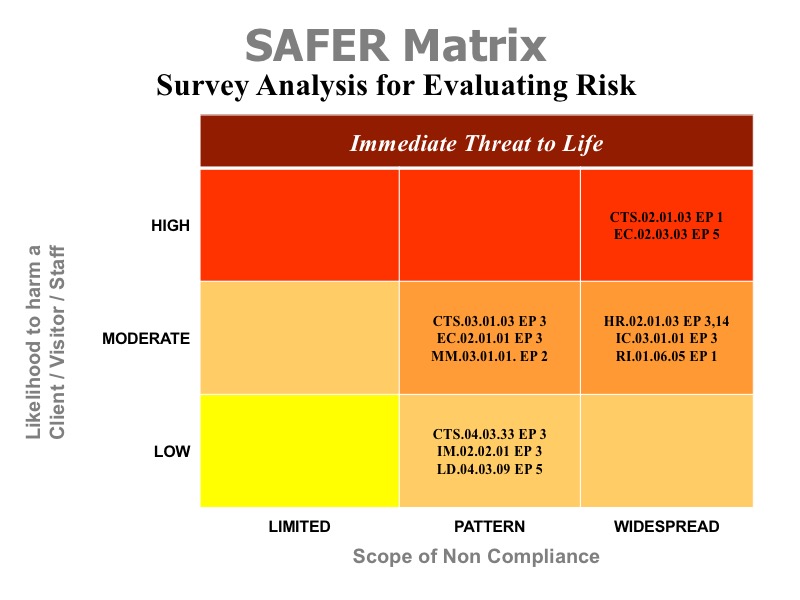There are some significant changes to survey reports, scoring of standards, and the post-survey response process that go into effect in January 2017 for behavioral health organizations. These changes have been in effect for psychiatric hospitals since June 2016 and are being implemented in all accreditation programs (including Behavioral Health) effective January 1, 2017. The following is a summary of the key changes:
SAFER Matrix
Survey reports will include a new matrix summarizing the survey findings based on the estimated level of risk to patients, staff, and visitors. The matrix is titled SAFER (Survey Analysis for Evaluating Risk). The SAFER matrix will be displayed as a nine-box grid summarizing the survey findings based on the following factors:
• Likelihood of harm (low, moderate, high)
• Scope of non-compliance (limited, pattern, widespread)
The purpose of using this new matrix is to provide organizations with a high level analysis of the degree of risk represented by the various survey findings. It’s designed to aid leadership in identifying and prioritizing those findings that present the greatest risk of harm.

Categorization of Findings
The categorization of survey findings will be less complicated. Findings will no longer be identified as Direct Impact or Indirect Impact. Also, elements of performance (EPs) will no longer be categorized as “A” or “C.” In addition, there will no longer be a category of “Opportunities for Improvement” which currently do not require a response to TJC. All findings will now be included in the survey report and the matrix and will require a response.
Post Survey Process: Evidence of Standards Compliance
TJC wants to simplify the post survey follow-up process. So, Evidence of Standards Compliance (ESC) for survey findings will no longer be due at 45 days for Direct Impact findings and 60 days for Indirect Impact findings. Instead, all ESCs will be due 60 days after the official survey report is posted. In addition, Measure of Success (MOS) data will no longer be required as part of the ESC. Instead, those findings rated at the higher risk level on the matrix will require a plan describing how the hospital will achieve and sustain compliance with the applicable standard.
The new SAFER matrix went into effect in June 2016 for our psychiatric hospital clients. So, we now have several months’ experience in how the changes have affected the survey process and survey findings. We are currently working with our Behavioral Health clients to help them understand this new approach and how they can best prepare for the 2017 survey process under the new SAFER model. Stay tuned for updates!
Also, you may want to attend the webinar that TJC has scheduled for BH organizations on January 24th. It will cover the new SAFER matrix and the changes to survey scoring – very useful information for 2017!

